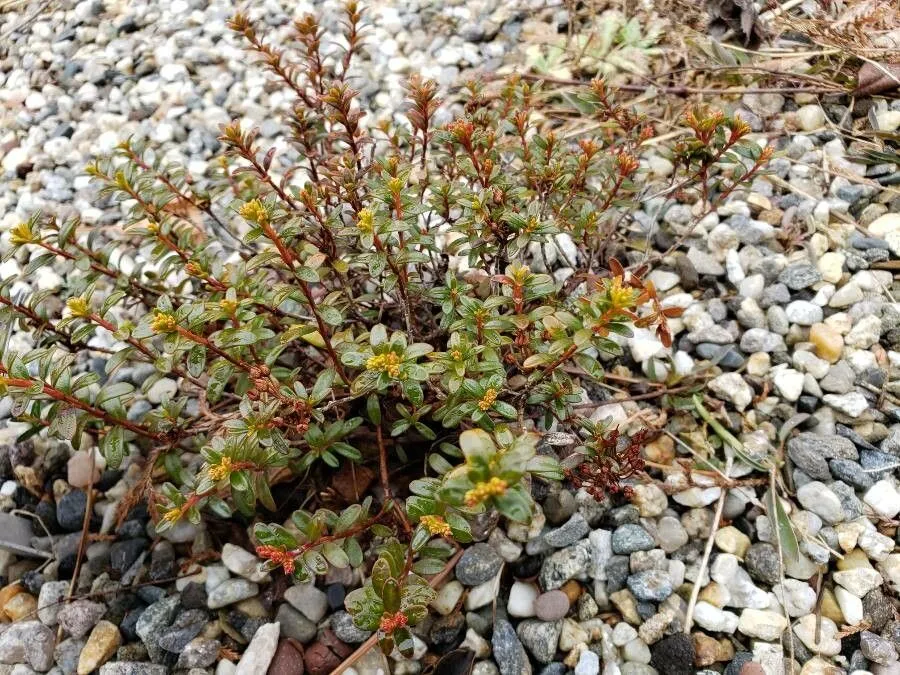
Author: (P.J.Bergius) Gift & Kron
Bibliography: Nordic J. Bot. 26: 47 (2008)
Year: 2008
Status: accepted
Rank: species
Genus: Kalmia
Vegetable: False
Observations: E. U.S.A.
Sandmyrtle, scientifically known as Kalmia buxifolia, is a fascinating and graceful member of the Ericaceae family. Hailing from the eastern regions of the United States, this plant graces its native habitats with charming beauty and ecological significance.
Renowned for its captivating appearance, Sandmyrtle typically exhibits a dense, compact growth habit that resembles a miniature shrub, often attracting attention in botanical gardens and natural settings alike. This hardy plant boasts small, glossy, evergreen leaves that are reminiscent of boxwood foliage, contributing to its distinct common name. The leaves are arranged oppositely on the stem, creating a lush and verdant canopy that remains vibrant throughout the year, offering visual interest in every season.
One of the most enchanting features of Kalmia buxifolia is its delicate, star-shaped flowers that bloom profusely in the spring and early summer. Typically, the flowers exhibit a range of alluring hues from pure white to soft pink, creating a breathtaking contrast against the dark green leaves. These blossoms are not only aesthetically pleasing but also play an essential role in the local ecosystem, providing nectar for various pollinators including bees and butterflies.
Ecologically, Sandmyrtle is adapted to thrive in well-drained, acidic soils commonly found in its native range. It often inhabits pine barrens, sandy plains, and rocky outcrops, where it plays a vital role in maintaining soil integrity and preventing erosion. The plant’s capacity to endure harsh environmental conditions and its resistance to drought make it an ideal candidate for natural landscaping projects aimed at promoting native vegetation and biodiversity.
The botanical significance of Sandmyrtle has been well-documented in scientific literature, including a noteworthy mention in the Nordic Journal of Botany (2008), cited as Nordic J. Bot. 26: 47. The classification and taxonomy of Kalmia buxifolia were first established by P.J. Bergius and later refined by botanists Gift and Kron, providing a clear understanding of its place within the Ericaceae family.
In summary, Sandmyrtle (Kalmia buxifolia) exudes an understated elegance that belies its robust nature. Its evergreen charm, delicate flowers, and ecological importance make it a treasured species among botanists, gardeners, and conservationists. Whether appreciated for its ornamental beauty or its role in the natural world, Sandmyrtle continues to captivate and inspire those who encounter it in its native Eastern U.S.A. habitats.
En: Sandmyrtle
Eng: sand-myrtle, sandmyrtle
Swe: sandmyrten
Taken Sep 9, 2022 by Kai Best (cc-by-sa)
Taken Mar 16, 2022 by William Coville (cc-by-sa)
Taken May 26, 2022 by William Coville (cc-by-sa)
Taken May 26, 2022 by William Coville (cc-by-sa)
Taken Mar 16, 2022 by William Coville (cc-by-sa)
Taken Sep 9, 2022 by Kai Best (cc-by-sa)
Taken Sep 9, 2022 by Kai Best (cc-by-sa)
© copyright of the Board of Trustees of the Royal Botanic Gardens, Kew.
Family: Myrtaceae Author: (F.Muell.) K.D.Hill & L.A.S.Johnson Bibliography: Telopea 6: 402 (1995) Year: 1995 Status:…
Family: Rubiaceae Author: Pierre ex A.Froehner Bibliography: Notizbl. Bot. Gart. Berlin-Dahlem 1: 237 (1897) Year:…
Family: Sapindaceae Author: Koidz. Bibliography: J. Coll. Sci. Imp. Univ. Tokyo 32(1): 38 (1911) Year:…
Family: Asteraceae Author: A.Gray Bibliography: Pacif. Railr. Rep.: 107 (1857) Year: 1857 Status: accepted Rank:…
Family: Fabaceae Author: Medik. Bibliography: Vorles. Churpfälz. Phys.-Ökon. Ges. 2: 398 (1787) Year: 1787 Status:…
Family: Aspleniaceae Author: (Cav.) Alston Bibliography: Bull. Misc. Inform. Kew 1932: 309 (1932) Year: 1932…